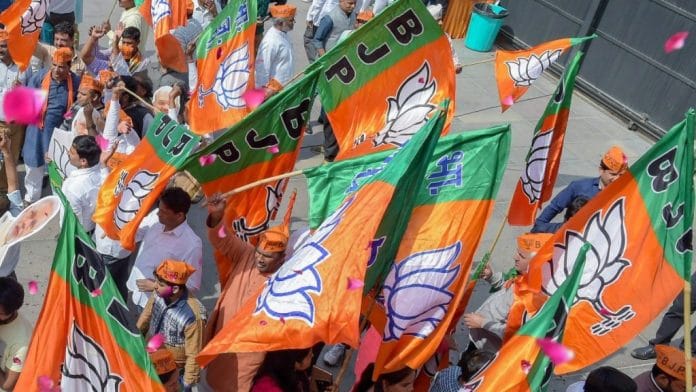New Delhi: To ensure greater penetration at the booth level, the Bharatiya Janata Party (BJP) has decided to bolster its panna pramukh system.
The panna pramukhs, which literally means page in-charges if translated, are the party’s first point of contact with voters at the booth level. Each panna pramukh is expected to make contact with, on an average, 30 voters or 5-6 families on one page of an electoral roll.
Ahead of next year’s assembly polls in five states, the BJP has decided to reinforce the system with the panna committee, where instead of a panna pramukh there will now be a five-member committee to cover the same single page on the electoral roll.
“We hope that the panna committee will help us garner at least 60 per cent of votes on that page in our favour,” said a senior BJP leader. “Earlier, one panna pramukh was responsible for at least 30 voters. Now, that number will increase as there will be a committee comprising five members.”
The BJP has replicated the panna pramukh concept, which was first used in the 2007 Gujarat assembly polls, in other states and also in the Lok Sabha elections.
The concept was introduced by Amit Shah, who is now the home minister of India.
Earlier, the Uttar Pradesh BJP had planned to make panna pramukh a permanent position to garner support from the voters and develop a direct interaction with them. So far, they are appointed only before elections.
Also read: 117 seats, no Sikh leader: BJP’s 2022 Mission Punjab begins with hunt for credible local faces
The new model
The BJP is gearing up for assembly elections in Uttar Pradesh, Uttarakhand, Punjab, Manipur and Goa next year.
Party leaders said a first step is strengthening the system.
“The responsibilities of panna pramukhs vary from ensuring that people listed on the pages of election rolls come out and vote and at the same time they also have to make sure voters are aware of the policies, schemes and welfare of the government,” a senior BJP leader said. “They remain in constant touch with the voters and motivate them to vote for the party. They develop a close relationship with the voters.”
Explaining the rationale behind the panna committees, a second senior BJP leader said the move is part of strengthening party activities and to maximise connect with the voters.
“The more ground workers there are and the more they connect with people, the better it is for the party,” the leader added. “It has been decided that from now on a committee insisting on five members will be formed on each page (panna).”
“Not only this, it has also been decided by the party that the five panna pramukhs of the committee will be from different families to ensure a greater outreach and their names will be mentioned on the same page,” said another leader.
A party functionary said there are at least 30 voters on a page and on an average it includes five to six families. “To form the panna committee, one needs to add one member each from the identified five families,” the functionary said. “In assembly elections, if committee members are able to convince the majority of their family members itself we will get a number of votes.”
The process for formation of panna committees will begin soon after the formation of party units at the block level in the poll-bound states.
(Edited by Arun Prashanth)
Also read: Focus on infra projects, tour poll-bound states: Nadda tells ministers as BJP preps for 2022 polls






